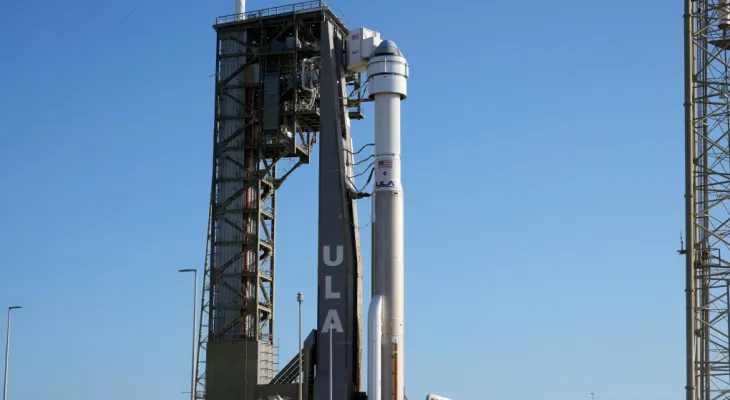Search here
Newspaper
Search here

Arab Canada News
News

Published: June 5, 2024
Boeing launched astronauts for the first time on Wednesday, belatedly joining SpaceX as a second taxi service for NASA.
A couple of NASA test pilots launched aboard Boeing's Starliner capsule to the International Space Station, becoming the first to fly the new spacecraft.
The flight of Butch Wilmore and Sonny Williams was expected to take 25 hours, with their arrival on Thursday. They will spend just over a week in the orbital laboratory before returning to Starliner for a landing in the remote desert of the western United States on June 14.
After years of delays due to spacecraft defects, the crew's debut of the "Starliner" comes at a time when the company is facing safety issues on the aircraft side.
Wilmore and Williams—retired Navy captains and former residents of the space station—repeatedly expressed full confidence in Boeing's ability to carry out this test flight correctly before the launch. After being sidelined due to bad software, the initial Starliner test flight in 2019 had to be repeated without a crew before NASA allowed its astronauts to board. The redo in 2022 was much better, but parachute issues later emerged, leading to the removal of the flammable tape from the capsule.
Wednesday's launch was the third attempt with astronauts since early May and came after two rocket-related issues, the last occurring over the weekend. A small helium leak in the spacecraft's propulsion system also caused delays, but managers determined that the leak was manageable and not a safety concern.
Steve Stich, NASA's commercial crew program manager, said before the weekend delay: "I know the road has been long to get here."
Boeing was contracted alongside Elon Musk's SpaceX nearly a decade ago to ferry NASA astronauts to and from the space station. The space agency wanted two competing U.S. companies for the role in the wake of the shuttle retirement, paying $4.2 billion to Boeing and just over half that amount to SpaceX, which redesigned the capsule it had been using to deliver station supplies.
SpaceX launched astronauts into orbit in 2020, becoming the first private company to achieve what only three countries had mastered – Russia, the United States, and China. It has transported nine crews to the space station for NASA and three private groups for a Houston company that rents out flights.
The launch from Cape Canaveral Space Force Station marked the 100th launch of United Launch Alliance's Atlas 5 rocket. This was the first crewed flight on an Atlas rocket since John Glenn's Mercury mission more than 60 years ago; the rocket typically launches satellites and other spacecraft.
Despite Atlas 5’s perfect track record, human presence heightened the tension among dozens of NASA and Boeing employees gathered at Cape Canaveral and the mission control center in Houston.
The Starliner from Boeing and SpaceX’s Dragon are designed to be fully autonomous and reusable. Wilmore and Williams will occasionally take manual control of the Starliner on their way to the space station to check its systems.
If the mission goes well, NASA will alternate between SpaceX and Boeing for taxi flights starting next year. The backup pilot for this test flight, Mike Fincke, will be ready for the next Starliner flight.
Fincke told reporters late last week: "When you have a new spacecraft, you have to learn everything about it, and this has been a great exercise."
Comments